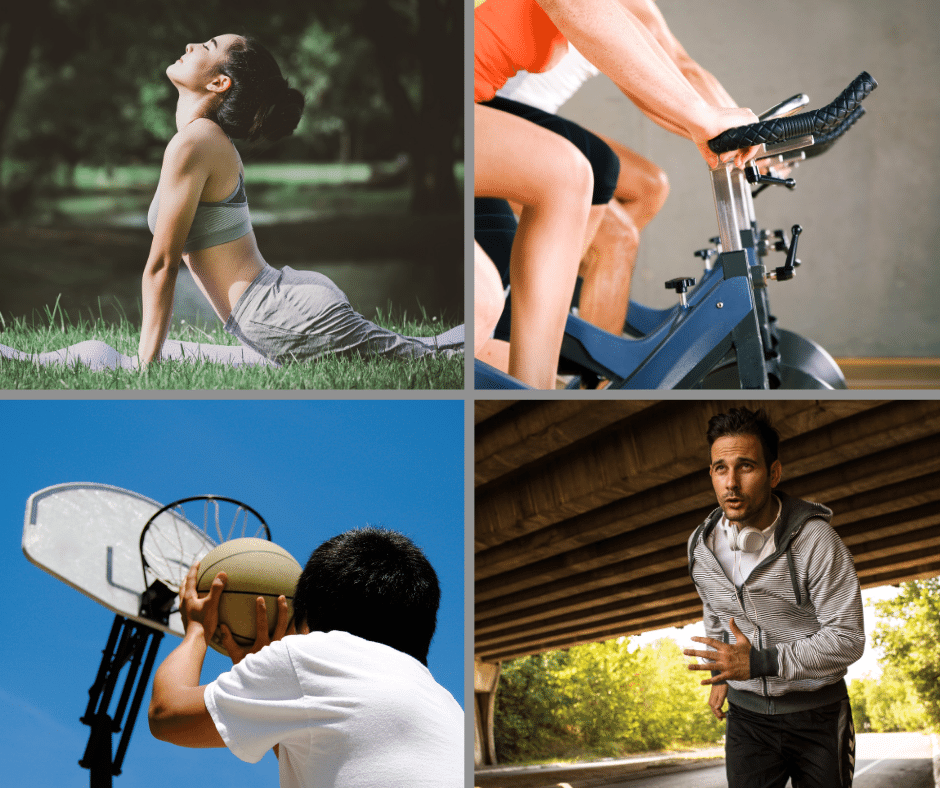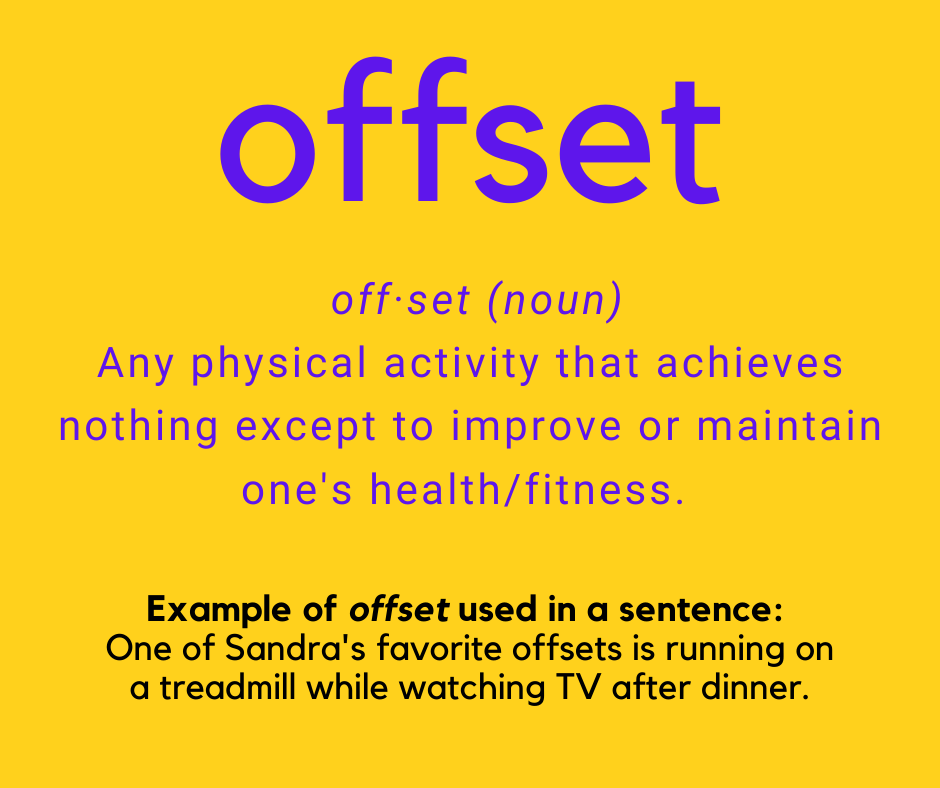This post was last updated on July 1st, 2024 at 02:30 pm
Even some of the most frugalmatic among us occasionally reach the end of the day realizing we spent more time sitting than we intended. For whatever reason, we were tied to our chairs at work, or perhaps had to travel long distances. Maybe we allowed one Netflix episode to turn into two and then three, four, five….
It happens.
And even if you are being frugalmatic—say, by painting the extra bedroom or weeding the garden—you still might feel like you didn’t physically push yourself quite hard enough. That’s when you might want to do an offset.
Frugalmatic sweat vs. offset sweat
I use the term “offset” instead of “exercise” because the offset’s purpose is to offset the negative effects of inactivity. Offsets include sports and workouts, from aerobics to yoga. The distinguishing characteristic of an offset is it achieves nothing tangible beyond the performance of the offset itself.
Offsets can feel tedious for many people like me: They struggle to see the point of running unless it’s to escape a bear or some other wild animal.
Before I started working from home last March, I biked to work nearly every day. Exercising while getting to where you need to go is a classic frugalmatic activity. Some of my co-workers assumed I was a biking enthusiast, and they were surprised to find out I’m not a huge fan of recreational biking. As I explained it, I only biked because it allowed me to get exercise that I otherwise wouldn’t get by driving. The fact that biking to work extended my commute by only 10 minutes each way made biking more beneficial than driving (see my post on calculating your frugalmatic ratio).
Some bike commuters, who switched to working from home because of the pandemic, truly enjoy biking. They simulate their former bike commutes by starting and ending their workdays with a bike ride. Some even go a step further by simulating the ride itself with a stationary bike, such as a Peloton. This group bikes for the love of biking. I envy them.
Since working from home, I’ve done much less biking. But I’m also aware I need to keep up my activity levels, so my offset of choice is shooting baskets in the driveway.
Finding the motivation to do offsets
The key to my success, and perhaps yours, is to closely tie offsets to my daily routine. For example, I do a set of push-ups and sit-ups before bed and while my computer boots up. While brushing my teeth, I do a set of squats.
While working at a standing desk, I perform foot and leg exercises using an anti-fatigue mat with ridges. When I get bored with those exercises, I swap the mat for a balance board.
Then after lunch, I shoot a round of hoops on the driveway (weather permitting). Also, I don’t change into “athletic” attire to shoot hopes. I just wear casual clothes: jeans, a shirt, and maybe a coat.
It’s only when offsets become detached from my routine that I stop doing them. That’s why I don’t go to the gym. It would simply be too much of a hassle to travel to a gym. If I’m going to do a physical activity exclusively for the health benefits, it must fit near-seamlessly within my already-established routine.
Read: How to form the physically active mindset
Offsets can feel like flying in a holding pattern
I compare offsets to an airplane in a holding pattern, waiting for its turn to land. The plane circles above the airport getting nowhere, but the alternative would be worse: crashing the plane before it’s safe to land. Offsets are similar in that they get you nowhere, but the alternative—becoming more sedentary—would be worse. It’s important for your health to keep moving just like it’s important for the pilot to remain in a holding pattern until a safe landing is possible.

There’s no need to feel badly if you don’t like offsets. If you’re the type of person who starts out gang busters on a new piece of exercise equipment but then fades after a few weeks, the temptation might be to think you lack willpower or are lazy. In fact, the evidence suggests humans are programed to conserve energy and only move when necessary, as Daniel Lieberman explains in his book, “Exercised.” So if you don’t see the point of “running just to run,” that’s evolution telling you not to waste your energy. That’s a normal feeling.
Read: Is juggling the offset for you?
Back when people had to move
Even people with relatively active lifestyles today would look like couch potatoes next to pioneers who settled the United States in the early 1800s. Back then, few people exercised for the sake of exercise. They didn’t need to. As Eric Sloane outlines in his book, “Diary of an Early American Boy,” the pioneers’ days were full of physical activity, from building mills, to making their own tools, to growing and preserving their own food. Nearly every task required physical effort. Sure, the pioneers faced plenty of dangers (and I’m not saying I’d want to trade places with them), but a sedentary lifestyle wasn’t one of them.
Time for a new strategy?
You don’t have to be a pioneer, fortunately, to have a more active lifestyle. At the same time, you don’t have to rely exclusively on offsets to achieve your fitness goals.
If you have a history of giving up on offsets, it might be time for a new strategy. Put on your analysis hat and study your routine—really think about why you sit and, more important, what you can do differently to add more movement to your day. If you’re looking for ideas on how to move more, I encourage you to sign up for the free download, the Frugalmatic Starter Kit. It offers new ways to think about physical activity and ideas for reaching your fitness goals.

